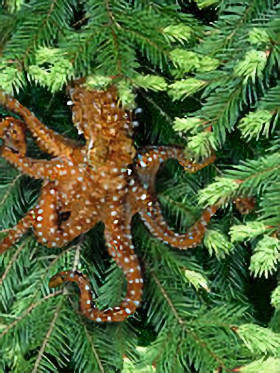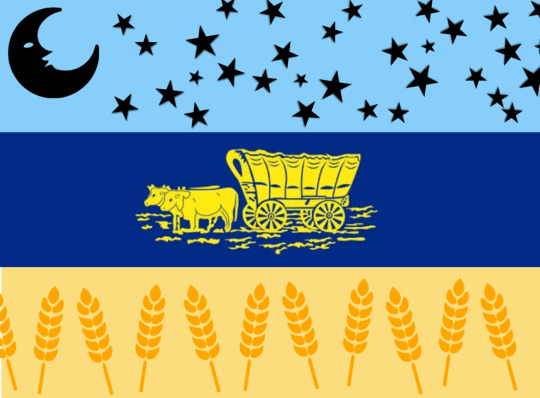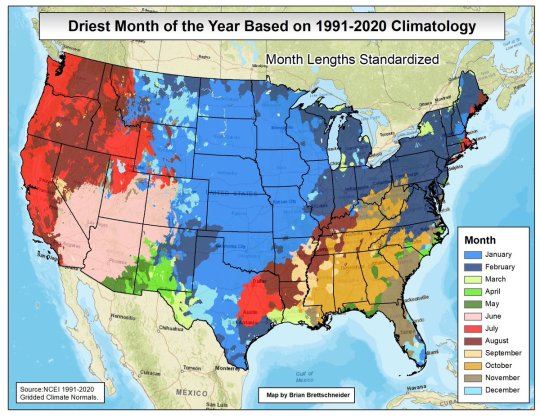#northwest mississippi
Text

#Sports#Baseball#MiLB#Akron RubberDucks#Harrisburg Senators#Birmingham Barons#Mississippi Braves#Northwest Arkansas Naturals#Frisco RoughRiders#Celebrities#Dominican Republic#Tennessee#North Carolina#WTF#lol
0 notes
Text
If I saw a giant red cedar in person I would simply break down in tears
#woof#this is coming from a southeasterner who has never been further west of the Mississippi than east Missouri lmao#I long to visit the pacific northwest
1 note
·
View note
Text
Today I want to talk about the Pacific Northwest Tree Octopus (Octopus paxarbolis).


OK, so for those who don't know, the PNW Tree Octopus was an internet hoax created in 1998 consisting of a website detailing the animal's life history and conservation efforts. It's completely fake - saying that up front. This animal never existed.
But if you look at this from a speculative biology standpoint? It's genius.
There is one, and only one, thing preventing Octopus from colonizing and being hugely successful in terrestrial environments in the PNW, and that's the fact that no cephalopod has ever been able to overcome the osmotic stress of inhabiting freshwater. We don't know why this is; other mollusks evolved freshwater forms just fine. But if you hand-wave away that one, single limiting factor, the PNW is just primed for a terrestrial octopus invasion.
The Pacific coast of North America is an active tectonic boundary, meaning the coast transitions pretty much immediately into the Cascade and Coastal mountain ranges (contrast with the east coast and its broad Atlantic plain). It's also a lush temperate rainforest, with very high precipitation. This means lots and lots of high-gradient mountain streams with lots of waterfalls and rapids and cold, highly oxygenated water, and not as many large, meandering rivers.
This has important consequences on the freshwater fauna. For one, there are not many freshwater fish in the Pacific Northwest - the rapids and waterfalls are extremely hard to traverse, so many mountain streams are fish-free. There also just isn't much fish diversity in the first place - there's sturgeon in the big rivers, salmonids, a few sculpin and cyprinids and... that's pretty much it. These cold northern rivers are positively impoverished compared to the thriving fish communities of the Mississippi or Rio Grande.
Few fish means few predators, and depending on the size of the first freshwater octopus, salmon and trout just wouldn't be much of a threat. And while these rivers don't have much in the way of fish diversity, there's lots of prey available - crayfish, leeches, mosquito larvae, frogs and tadpoles, water striders, and other aquatic insects, just to name a few. So the first Octopus pioneers to invade the rivers would be entering what essentially amounts to a predator-free environment with lots and lots of food and no competition. Great for colonization.
These ideal conditions get even better once you get up past the rapids and waterfalls, since there's no fish whatsoever in those streams. Octopus, with their sucker-lined arms, are perfectly equipped to navigate fast-moving, rocky-bedded streams and climb up cliffs. They'd also be well able to traverse short stretches of dry ground to access even more isolated pools and ponds. In fact, once Octopus overcome the osmoregulation problem there's nothing at all preventing them from colonizing land in earnest, since the PNW rainforests are so wet; there's no danger of drying out.
Finally there's the question of reproduction. Octopus are famously attentive mothers, because they need to keep the water around their eggs moving and well-oxygenated. In a mountain stream, this wouldn't be an issue, because the cold, turbulent water holds lots and lots of oxygen. Breeding in high mountain streams would be ideal, and the mothers might not even need to attend to their eggs, freeing them up to evolve away from semelparity and allowing them to reproduce more than once in their lives; their populations would thus increase rapidly and dramatically.
I think, if octopus managed to invade freshwater ecosystems in the PNW, it would dramatically change the ecology much like an invasive species. They'd be unstoppable predators of frogs, bugs, slugs, maybe even larger animals like snakes, birds, and small mammals. Nothing would eat them except maybe herons, and things like bears and raccoons would give them a wide berth due to their venom. They would rule that landscape.
The tl;dr is that the PNW is primed for invasion by cephalopods, if only they could manage to overcome the osmoregulation problem and live in freshwater. If the Pacific Northwest Tree Octopus really did exist, it wouldn't be a shy and reclusive species on the brink of extinction; it would be a pest, an invasive, overpopulated menace you couldn't get rid of if you wanted to. I can just imagine them crawling up onto people's bird feeders and either stealing the nuts or luring in unsuspecting sparrows and starlings. They would sit in the trees and throw pinecones at hikers for fun. They would be some unholy mixture of snake and slug with the personality of a magpie and I am incensed that they only exist in fiction.
#long post#octopus#speculative biology#speculative evolution#spec bio#spec evo#pacific northwest#pacific northwest tree octopus#truly a shame that there are no freshwater or terrestrial cephalopods
294 notes
·
View notes
Text
Lulu Merle Johnson

Lulu Merle Johnson was pioneer in education and the first African American woman to earn a Ph.D. in the state of Iowa. Born on September 14, 1907 in Gravity, Iowa to Jeanette (Burton) and Richard Johnson, her mother was the daughter of freed slaves, and her father, who was formerly enslaved, owned and operated his own barbershop. The family were the only Black residents in the town and were highly respected.
Johnson’s family moved to eastern Iowa when she was entering her senior year. In 1925, she graduated from Clinton High School, where she was captain of the girls’ basketball team. After graduation, Johnson enrolled at the State University of Iowa (now the University of Iowa). Out of over 2,000 students, there were only 64 Black students–14 women and 50 men. University housing was segregated, so Johnson and the other Black students had to reside in off-campus housing.
Lulu Johnson obtained all three of her degrees from the University of Iowa. She earned a Bachelor of Arts in history in 1929, followed one year later by a master’s. Throughout the 1930s, Johnson worked on a doctorate in American history. She received support from the Rockefeller Foundation.
Johnson, a member of the Alpha Kappa Alpha Sorority, challenged the university’s racial structure. As an undergraduate, she insisted on sitting in front row seats assigned to white students in her political science class. As a graduate student, she protested the university’s pool policies. All University of Iowa students were required to pass a swimming test. The university was willing to let Johnson as well as the other Black students waive the test in order to keep them out of the pool, so they would not have to drain and refill it for the white students. Johnson and the other students informed their instructor that they would attend class at 5:00 am and take the swimming test, making the pool unusable for the remainder of the school day. Her action ended the university’s racially-discriminatory pool policy.
In 1941, Lula Merle Johnson became the first African American woman to earn a Ph.D. at the University of Iowa. Her thesis was “The Problem of Slavery in the Old Northwest, 1787-1858.” She held academic appointments at a number of HBCU’s, including Talladega University in Alabama; Tougaloo College in Mississippi; Florida A&M; and West Virginia State College. In 1952, she accepted a position at Cheyney State College in Pennsylvania, where she was a history professor and dean of women. Dr. Johnson retired from Cheyney State as the director of the Department of Social and Behavioral Science. She moved to Millsboro, Delaware and spent the remainder of her life traveling with her partner, Eunice Johnson. She died on October 18, 1995, at the age of 88.
In 2018, the Graduate College at the University of Iowa established the Lulu Merle Johnson Fellowship, which provides funding and support for Ph.D. students from underrepresented racial and ethnic minority groups. On June 24, 2021, the Johnson County (Iowa) Board of Supervisors voted unanimously to change the county’s name to Lulu Merle Johnson County. The county was originally named for Vice President Richard M. Johnson (1837-1841), a slaveholder who never resided in Iowa and claimed credit for killing Shawnee Chief Tecumseh during the War of 1812. Lulu Merle Johnson County is only the second in the nation named after an African American. (The other is Martin Luther King County in Washington.) The University of Iowa, where Lulu Johnson received her education, is the county seat of Johnson County.
https://www.blackpast.org/african-american-history/people-african-american-history/lulu-merle-johnson-1907-1995/
46 notes
·
View notes
Text
[“After the Civil War, six of the seven divisions of the US Army were stationed west of the Mississippi, where they carried out genocidal wars against the Plains and southwestern Indigenous nations, including the intentional extermination of tens of millions of bison. These troops were pulled out of the South, where they were supposed to be occupying the defeated former Confederate states to allow for land distribution to former slaves and for their political participation in democratic elections. Without sufficient US Army troops to stop them, the Ku Klux Klan made Reconstruction impossible, imposed a reign of terror, and restored the ex-Confederate elite.
But the “wild west” originated in the Northwest Territory, east of the Mississippi, not in the West. Defining the West as the site of genocidal conquest erases its origins at the very founding of the United States, when and where its leaders were intent on building world power based on land theft, genocide, and slavery, the pillars of the US fiscal-military state.”]
roxanne dunbar-ortiz, from not a nation of immigrants: settler colonialism, white supremacy, and a history of erasure and exclusion, 2021
92 notes
·
View notes
Text
I saw this back when I used to use Reddit (for animal crossing and trans+ stuff mostly), and I felt so honoured that they used my Florida flag redesign in this that I screenshotted it. But when I looked to find the original poster, they had deleted the post (likely because of negative replies, vexillology Reddit is scary).

They recreated the state flags to be more about symbolism and individuality rather than about aesthetics (which is the problem I see with a lot of over simplified state flags). All while keeping the flags that actually carry deep meaning and are beloved by the residents.
I’m not the biggest fan of Nebraska’s, Virginia’s, and Wisconsin’s, but all the others are wonderful (especially Florida’s… I will not apologize for being biased lol)
The original Reddit person’s caption:
“I kept some flags which I believe are currently great. Most of them are all over State merchandise, and people of these states carry a lot of state pride for these flags. They are:
1. Alabama
2. Alaska
3. Arizona
4. Arkansas
5. California
6. Colorado
7. lowa
8. Maryland
9. Mississippi
10. Missouri
11. New Mexico
12. Ohio, my home state! [not mine, OPs]
13. Rhode Island
14. South Carolina
15. Tennessee
16. Texas
17. Utah
18. Wyoming
19. District of Columbia [I believe you mean the Douglass Commonwealth]
20. Guam
21. The Northern Mariana Islands
22. Puerto Rico
I've switched some State’s boring Seal on a Bedsheet flags into their more popular historical ones. They are:
23. Conecticut ~ New England Flag
24. Hawaii ~ Kanaka Maoli
25. Maine ~ Original State Flag
26. Vermont ~ Green Mountain Boys Flag
27. Virginia ~ Gadsden Flag
28. West Virginia ~ Original State Flag
I've made a few tweaks to some existing flags so they look more unique / are more easily recognizable. They are:
29. Indiana ~ Golden Frame
30. New Jersey ~ Added Stripes
31. North Carolina ~ Un-Tex-ified
32. Oklahoma ~ Added Stripes
33. American Samoa ~ Added Southern Cross
I designed some using the Pan Cascade colours for the Pacific Northwest (BC will have the tree one). They are:
34. Idaho
35. Oregon
36. Washington
I borrowed some other designs which I found on here which I found beautiful. I mostly looked for flags which were designed by locals from the states that they are redesigning or included state symbols on their old flags. They are:
37. Florida [omg they chose mine!!!]
38. Georgia
39. Kansas
40. Kentucky
41. Louisiana
42. Michigan
43. Montana
44. Nevada
45. New Hampshire
46. New York
47. North Dakota [I prefer my communist flag better wajajaja]
48. Pennsylvania
49. South Dakota
50. Wisconsin
51. Virgin Islands
I left the flags currently in the process of a redesign blank, for, given the recent track record, any new flags are probably going to look amazing like Utah’s and Mississippi’s. They are:
52. Illinois [this is your reminder to vote for your new state flag if you’re from this state!!!]
53. Massachusetts [this is your reminder to vote for your new state flag if you’re from this state!!!]
54. Minnesota [this is your reminder to vote for your new state flag if you’re from this state!!!]
I kept one Seal on a Bedsheet flag to honour this horrid time in American vexillological history. That is:
55. Delaware
And lastly
56. Nebraska (idk)”
While I agree with most of the OP’s opinions, I think Nebraska’s flag would look better if it looked something like this:

Better designed of course, I made this on Pic Collage in like 5 minutes
Im not sure about Wisconsin and Virginia, I just know I’m not the biggest fan of either (since Virginia’s flag has a separate meaning and Wisconsin’s is just bland.
Let me know what you think!
And if you’re the OP of this, please let me know, I like your choices!!
#usa#united states#state flags#alabama#alaska#arizona#arkansas#california#colorado#conecticut#delaware#florida#georgia#hawaii#idaho#illinois#indiana#iowa#kansas#kentucky#lousiana#maine#maryland#massachusetts#michigan#minnesota#mississippi#missouri#montana#nebraska
17 notes
·
View notes
Photo

This map shows which month is the driest of the year based on NCEI gridded climate normals. For some parts of the interior west/northwest and the middle Mississippi River valley, August is the driest month of the year.
by @Climatologist49
172 notes
·
View notes
Text

#Sports#Baseball#MiLB#Akron RubberDucks#Harrisburg Senators#Birmingham Barons#Mississippi Braves#Rome Braves#Northwest Arkansas Naturals#Frisco RoughRiders#Celebrities#Dominican Republic#Tennessee#North Carolina#WTF
0 notes
Text

Hey, Portland OR-area folks! I am going to have a booth at the Mississippi Street Fair this Saturday, July 15, with my books and info on tours and other good stuff! I'll be on the east side of the street between Shaver and Mason. It's from 10am - 8pm; highs are supposed to be in the 90s, so showing up earlier and bringing water will help (I'll be out there all day, regardless.) Come say hi, chat about natural history stuff and things, and find out a bit of news that I haven't gone public with just yet!
Also, Sunday, July 16, I'll be leading a guided nature hike at Lacamas Regional Park in Camas, WA. This is the ONLY scheduled hike I have in the Portland metro area this year; I should have more next year, and of course you can always book me for a private tour anywhere in the Pacific Northwest. For the Lacamas Sunday hike, please register ahead of time at https://www.eventbrite.com/e/lacamas-lake-forest-and-meadow-hike-tickets-642448820717
#Portland#Portland Oregon#Misssissippi Street Fair#street fair#hiking#guided hikes#tours#guided tours#Oregon#Washington#Pacific Northwest#PNW#outdoors#nature
28 notes
·
View notes
Text
Illinois state nursery is selling saplings for really good prices. They do ship out of state
If anyone in south alabama, south Mississippi, or northwest Florida wants to go in together and split up an order, please let me know


5 notes
·
View notes
Text
Extremists Links: Neo-Nazi White Supremacists Fantasy of 'Ethnostate' in New England

The latest reporting on extremist groups within the Radical Right.
This New England neo-Nazi group is getting bigger and scarier, experts say. Most troubling: Military vets fill its ranks. [Boston.com]
These Nazis Want to Turn New England Into a White Ethnostate [Rolling Stone[
Lawmaker calls for crackdown on neo-Nazi training camp in northern Maine [Maine Beacon]
Neo-Nazi leader establishes training site in Maine [ABC News]
Extremist watchdog explains New England white supremacists galvanized by Trump [NPR]
The Synagogue Attack Stands Alone, but Experts Say Violent Rhetoric Is Spreading [The New York Times]
‘Begin to heal’: Pittsburgh reacts to the synagogue shooter’s death sentence [Pittsburgh Post-Gazette]
After USA TODAY investigation, watchdog report says military failed to screen extremist recruits [USA Today]
Recruiters skipped steps to screen out extremist enlistees, IG says [Army Times]
Watchdog Warns Recruits Are Not Being Properly Vetted for Extremism Ties [Military.com]
Pentagon watchdog finds lapses in screening of applicants connected to extremist groups [The Hill]
Texas extremist group Patriot Front sued over Boston attack of Black man [The Dallas Morning News]
Boston man files lawsuit seeking to bankrupt white supremacist group he says assaulted him [ABC News]
‘Patriot Front’ White Nationalists Sue Leftist Activist for IDing Them, Getting Them Fired [The Daily Beast]
Far-right Patriot Front members sue leftist activist for allegedly leaking their identities [The Daily Chronicle]
Patriot Front resurfaces in Birmingham [Alabama Political Reporter]
A new network of hate groups in the Pacific Northwest targets smaller Pride festivals [NPR]
Saratoga Springs public safety commissioner provides report on weekend Proud Boys march [The Daily Gazette]
New video believed to show Proud Boys in Saratoga Springs [NBC News]
White supremacist Robert Rundo extradited from Romania to US to face charges [The Guardian]
A new high tide of antisemitism in America [Axios]
Fatal stabbing of NYC gay man is being investigated as a possible hate crime [NBC News]
Teen suspect charged with hate crime murder of dancer at Brooklyn gas station [ABC News]
Oklahoma man given maximum sentence for Shawnee hate crime [NPR]
White supremacist banners appear in Louisiana’s capital city [Associated Press]
Banners promoting White nationalist group Patriot Front alarm Baton Rouge community [The Advocate]
White Supremacist Banners Removed in Predominately Black Baton Rouge [The Messenger]
White ex-officers in Mississippi plead guilty to racist assault on 2 Black men during raid [CBS News]
'We're going to find you': Pensacola police and FBI investigating antisemitic vandalism [Pensacola News Journal]
Pensacola police arrest 4 teens in connection to string of antisemitic vandalism [Pensacola News Journal]
Neo-nazi recruitment flyers found outside Middletown homes. LGBTQ+ organization notified. [Newport Daily News]
Read more here.
11 notes
·
View notes
Text


Dynamic Dauphin Island
A fringe of barrier islands runs parallel to the coast of Mississippi and Alabama, protecting the mainland from the pounding waves of the Gulf of Mexico. The easternmost of these islands, Dauphin Island, is a 14-mile-long landmass that guards the mouth of Mobile Bay, Alabama. It serves as a stopping place for migratory birds and frequently changes shape.
Barrier islands are constantly evolving. Their beaches and spits get shifted, built up, and torn down by the natural ebb and flow of currents and tides. In 2005, powerful storm surge from Hurricane Katrina cut a hole through the western side of Dauphin Island. A 2023 image of the island (above-right), acquired with the OLI-2 (Operational Land Imager-2) on Landsat 9, shows a sandy peninsula extending into the Gulf from the eastern part of the landmass. This peninsula did not exist 20 years ago.
“We could call it the peninsula-formerly-known-as-Pelican-Island, but I think Pelican Peninsula sounds better,” said Scott Douglass, a coastal engineer and emeritus professor at the University of South Alabama. Although Pelican Island has moved around for centuries in the same general location, in 2008, the island moved so far north that it welded onto Dauphin Island.
The joining of these two islands was no surprise to Douglass. In 1994, Douglass documented tidal currents pushing the sand of Pelican Island northwest, onto the western beaches of Dauphin Island, and he projected that the two islands would likely merge in the next decade or two.
Barrier islands in this region have crashed into Dauphin Island before. Douglass studied maps and charts dating back to the early 18th century, which show small barrier islands have collided with Dauphin Island twice in the past: in the early 1700s and again in 1852. Douglass hypothesizes that this kind of collision occurs at roughly 150-year intervals. As sediment builds up on the sandy shoals offshore in the Gulf of Mexico, a new island eventually forms and gets pushed north until it joins the larger Dauphin Island.
“This is geology happening right before our very eyes,” Douglass said after reviewing the satellite images. “And because this phenomenon is so rare, it’s something that your grandparents probably didn’t see, but maybe your great grandparents.”
The joining of these two barrier islands has replenished sand on Dauphin Island’s beaches, which have been receding in recent years from erosion. According to Douglass, who has been helping to inform and assess projects aimed at protecting the island, the merger has essentially been a natural form of beach nourishment.
NASA Earth Observatory images by Lauren Dauphin, using Landsat data from the U.S. Geological Survey. Story by Emily Cassidy.
2 notes
·
View notes
Text
Round 1 Results
exciting stuff in our regional quarterfinals! all 64 license plates of the united states and canada going head to head. some races were landslides, some were neck and neck. in the end, 32 plates go on to the regional semifinals, and 32 stay behind, crying in the dust. the winners are:
Pacific Region: Yukon over Alaska; Washington over British Columbia; Nevada over Oregon; Hawaii over California
South Coast Region: Virginia over Washington DC; South Carolina over North Carolina; Georgia over Florida; Alabama over Mississippi
Prairie–Tundra Region: Nunavut over Northwest Territories; Manitoba over Saskatchewan; North Dakota over South Dakota; Kansas over Nebraska
Maritime Region: Quebec over Newfoundland and Labrador; Nova Scotia over Prince Edward Island; Maine over New Brunswick; New Hampshire over Vermont
Mountain Region: Alberta over Montana; Wyoming over Idaho; Colorado over Utah; Arizona over New Mexico
Outer South Region: Oklahoma over Texas; Louisiana over Arkansas; Missouri over Tennessee; West Virginia over Kentucky
Great Lakes Region: Michigan over Ontario; Minnesota over Iowa; Wisconsin over Illinois; Ohio over Indiana
Mid-Atlantic Region: Rhode Island over Massachusetts; New York over Connecticut; Pennsylvania over New Jersey; Maryland over Delaware
for those who may be curious, the closest race was colorado vs utah, with a final vote of 51.3% to 48.7%


the biggest landslide was maine vs new brunswick, with a final vote of 91.2% to just 8.8%


our regional semifinals are coming up. voting starts tomorrow at 8am PST!
3 notes
·
View notes